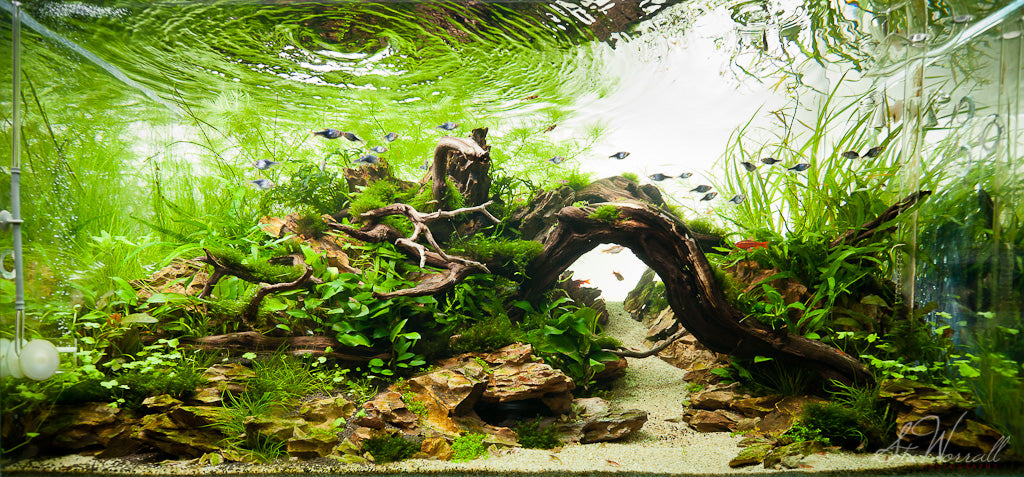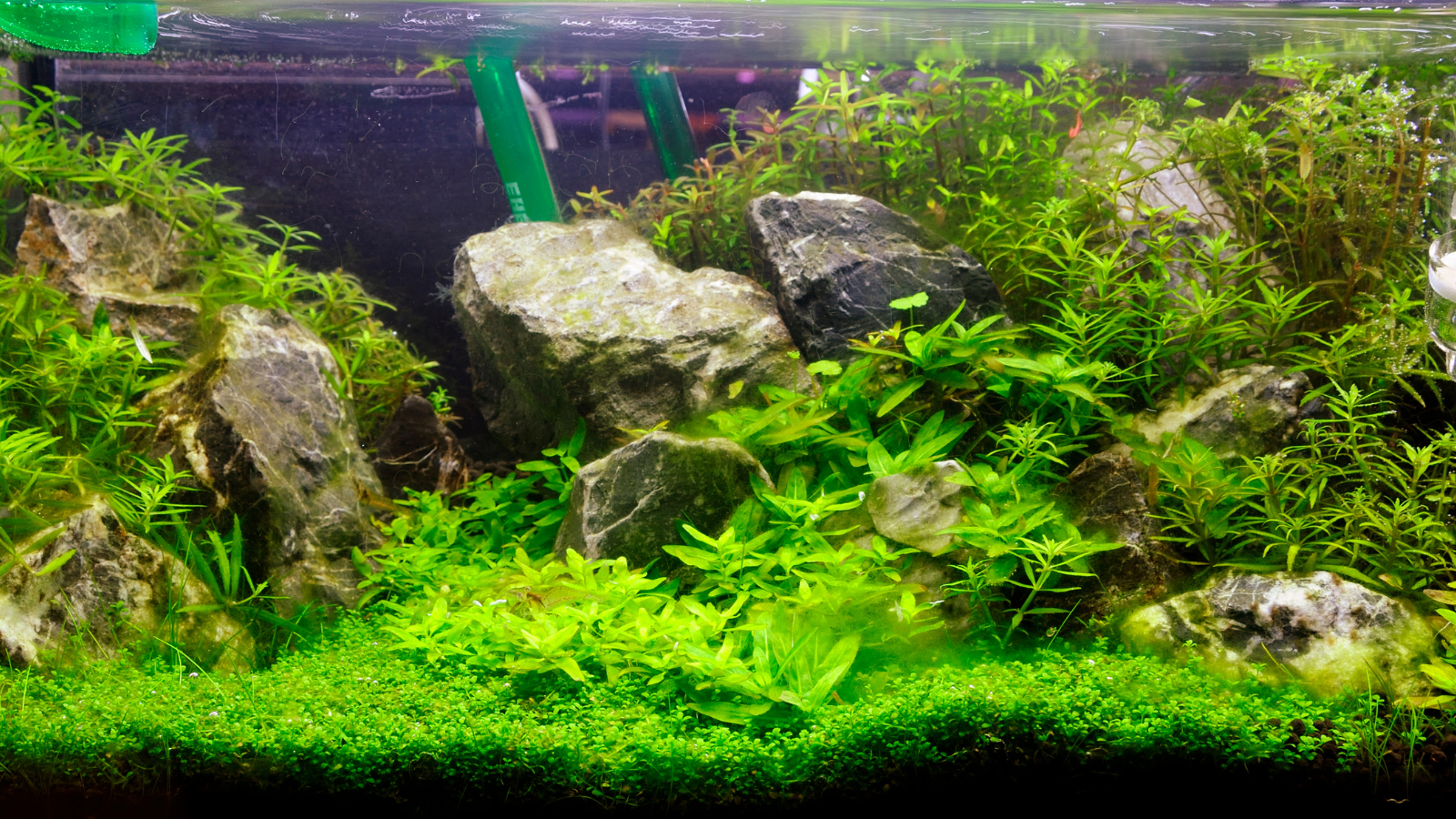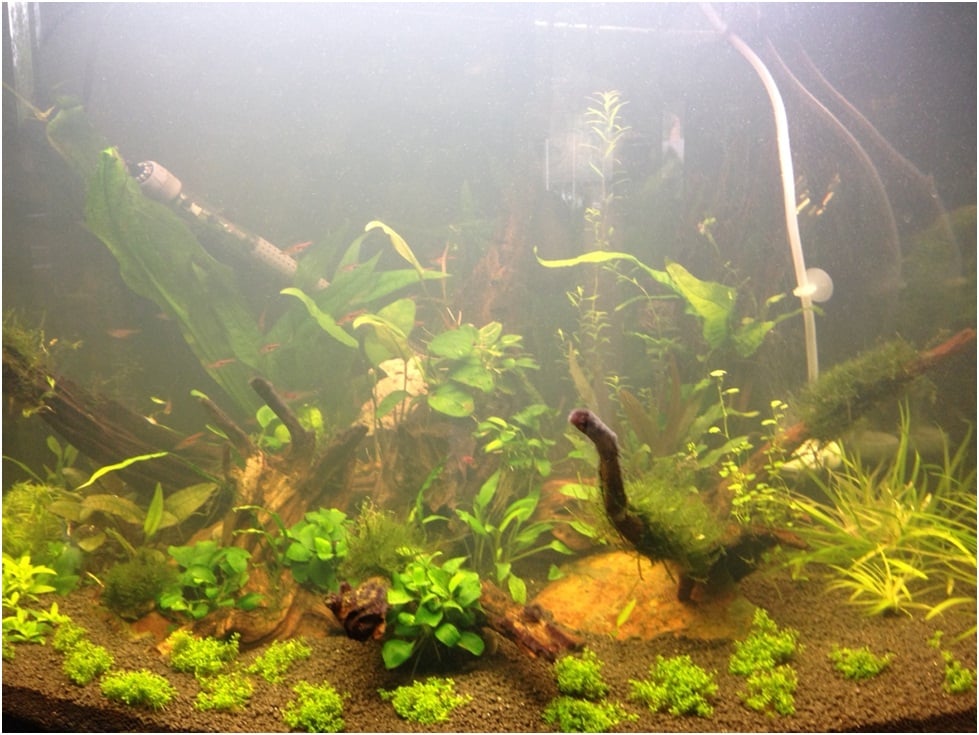
Every day, we divide everything and classify it, for example, types of music, styles of clothing. Aquaristics also has its divisions. There are among us, as in every area of life, supporters of such grouping and those for whom an aquarium is simply ... an aquarium.
Everything started with Nature Aquariums…
Nature Aquarium is a trend in the art of arranging planted aquariums. It was started by Takashi Amano - a Japanese photographer, a figure probably known to most aquarists. It was the Nature Aquarium that gave rise to the four main styles that are still in use today: Iwagumi, Ryuboku, Mizube and Ragwork.
But before we move on to the divisions, a few introductory words about arranging a Nature Aquarium.
The aim of this branch of aquaristics is not to create the best possible biotope conditions for aquatic animals. The first violin in this type of arrangement is played by carefully selected plants in very good condition, as well as roots and rocks. However, fish and other creatures (e.g. shrimps) are a significant complement to a natural aquarium. They give the arrangement "life" and dynamism.
There are three basic types of arrangement:
-Convex arrangement: The tallest plants are planted in the central part of the reservoir. Lower plants at the side and front walls. Undoubtedly, the easiest type of arrangement to use. Easy access to windows for cleaning, filter inlet / outlet.
-Concave arrangement: The concave arrangement theoretically has the lowest point in the central part of the tank. We plant tall stem plants on the sides.
-Triangle Scape: An interesting type of arrangement. It works very well if we properly integrate it into our apartment. For example, an aquarium in the corner of the room. The tallest plants are planted on the left or right side wall. On the opposite side, the plants are the lowest (lawn). It is very nice to complement the arrangement with roots planted with mosses.
Basic Tips for Beginners:
-Background. Non-colored wallpaper depicting the bottom of the ocean. Only the most ordinary black foil or "mist" foil. Such a background contrasts best with the greenery of plants.
-Arrangements should be thought over, not created quickly in 30 minutes. You really need a lot of experience to get to that practice.
-There should be two times more substrate in the background than in the front part of the aquarium
-Use only one type of stones and roots.
-If you create a "beach" reliably separate the sand from the rest of the substrate. Otherwise, the beach is bound to mix with the ground, which will have a poor visual effect.
-Vegetation should be well planned. Don't forget that some fast-growing species can "choke" slow-growing species.
-"A million" species of plants in a small glass usually end in a light kitsch and not a nice arrangement.
-Good filtration and the right amount of CO2 from the cylinder are very important.
-Straight lines and even stones should be avoided. It is important to vary the height of the accessories as much as possible.
-Plants should be planted starting with the lowest species.
-Use as many plants as possible at startup.
-Do not stick the thermometer suction cup on the windshield.
IWAGUMI
Iwagumi is the oldest style that comes from the art of creating Japanese rock gardens. Only stones are used to create this type of arrangement. They should be the main eye-catchers. In this style, it is worth following the principle of the "golden mean". It says that the main eye-catching element should be at a distance from the sides of the aquarium where the ratio of these distances is 1: 1.618. To find this point, just divide the length of the aquarium by 2.618. It is worth mentioning that in the composition of Iwagumi it is recommended to use an odd number of large rocks, as an even number would make the arrangement symmetrical (as a result it would disturb the natural arrangement of the rocks).
For planting this type of composition, mainly lawn plants (Hemianthus callitrichoides, Glossostigma elatinoides, Eleocharis parvula, Micranthemum Monte Carlo) are used. Sometimes Iwagumi can also be found with a visible third plan of plants - tall plants (mainly all Rotala varieties).
RYUBOKU
In contrast to the Iwagumi style in Ryuboku, we can use both wood-roots and stones. This is the most common style of arranging natural aquariums, because it gives theoretically unlimited possibilities for creating various arrangements. Ideally suited for mapping forest landscapes. In Ryuboku, we can use virtually all species of aquatic plants, ranging from lawn plants (foreground) to tall plants (third plan).
MIZUBE
It can be said that it is a continuation of the Ryuboku style. However, in Mizube, decorative materials, including plants, extend beyond the surface of the water. Style composition in Mizube can only be performed in "open" tanks.
RAGWORK
The youngest of all four styles. Unlike the others, there aren't many rules to follow. In this style, we use a large amount of rock to accurately reproduce a piece of mountain landscape - e.g. a mountain slope with lush, mostly grassy vegetation.
We introduced you to the basic styles within Natural Aquaristics. You can make your aquariums in a specific style and strictly stick to the guidelines that someone has invented in advance. You can also create a composition in your own unique and never before seen style. The most important thing is that the arrangement you have made pleases your eye and gives you fun.


